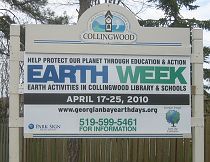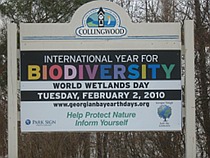Artists are leading the way in the transformation of a broken world
“So much of the work of oppression is policing the imagination.”
Saidiya Hartman
When I look at, amongst other traditional landscape paintings, The Hay Wain, created by John Constable in 1821, I observe with nostalgia the artist’s representation of clean, pesticide-free water, pollutionless skies, thriving trees and a small, unobtrusive cottage on the bank of the river the horses and wagon are crossing—a semi-pristine land with humans in harmony with Nature. Landscapes help define a nation and its individuals.
Fast forward to July 4, 2022, and two climate/biodiversity activists have adroitly superimposed a 21st-century equivalent of that bucolic river scene on Constable’s original; in that rendition, a plane flies overhead, the trees are dead, there are ugly skyscrapers and a belching smoke stack, and finally a large truck comes up the polluted river. Tragically, there are now many local landscapes that echo this dystopian image. Meanwhile, there truly is not one toxic-free river in all of Britain in 2023, and ecological systems are in a devastating free-for-all.
Now transform any of the landscapes of the Canadian “Group of Seven” painters, or Québécois Fredrick Simpson Coburn’s landscapes with horses to have a similar outcome, and you get the idea: we have created “the ecological rift” between humans and the rest of Nature, discussed in an important book of that name by John Bellamy Foster, Brett Clark and Richard York. The authors write: “The planet as we know it and its ecosystems are stretched to the breaking point. The moment of truth for the earth and human civilization has arrived.”
Now think about Nature poets like Wordsworth or Keats writing 200 years ago and transform them into contemporary eco-poets such as W.S. Merwin, who penned:
All the green trees bring
from “To Ashes”
their rings to you
the widening
circles of their years to you
late and soon casting
down their crowns into
you at once they are gone
not to appear
as themselves again
On to music, and remember Vivaldi’s Four Seasons for solo violin and orchestra, but turn it on its melodic and harmonic head and you get Frank Horvat’s Auditory Survey of the Last Days of the Holocene, where in one segment you can hear trees being cut done with a chainsaw in the background: https://tinyurl.com/auditory-survey
Tchaikovsky’s 19th-century ballet Swan Lake was recently metamorphosed by contemporary French choreographer Angelin Preljocaj into a struggle to save swans and lakes from the capitalist machinations of an oil baron’s fossil fuel dreams: https://tinyurl.com/swan-lake-transformed
Let us heed the call of artists. Artists have always been at the forefront of society. The arts give us the imagination and the guts to turn around these most dangerous times in humanity’s history. See, hear, sniff out, listen and by all means taste what they unreservedly spread before us.
Eighteen Québec universities have come together to hold six free online sessions on different aspects of climate every Wednesday at noon until November 22 in order to give citizens an all too brief foundation in climate education. It is a beginning. The first of these webinars took place on October 18 and gave us the historical background to the annual United Nations Climate Change Conference (COP), including excellent graphics for the upcoming COP28 meeting to be held in Dubai from November 30 to December 12. Other webinars will focus on such critical climate topics as forests, oceans, climate justice, water, agriculture, energy transition, eco-finance, and the role of cities in climate mitigation actions.
This is a new effort on the part of Québec’s universities to begin to take seriously their responsibilities towards the students they are entrusted to care for. You may remember that I wrote a long article, “No student should be denied a climate education,” on September 15. I strongly urge all levels of educational institutions to speed up and intensify their commitment, and let’s not ever forget the need to robustly put into general practice a weaving of biodiversity into the heart of education. In order to register for the webinars, see https://unis-climat.teluq.ca
“Let not any one pacify his conscience by the delusion that he can do no harm if he takes no part, and forms no opinion. Bad men need nothing more to compass their ends, than that good men should look on and do nothing!”
John Stuart Mill, inaugural address delivered to the University of St Andrews on February 1, 1867

